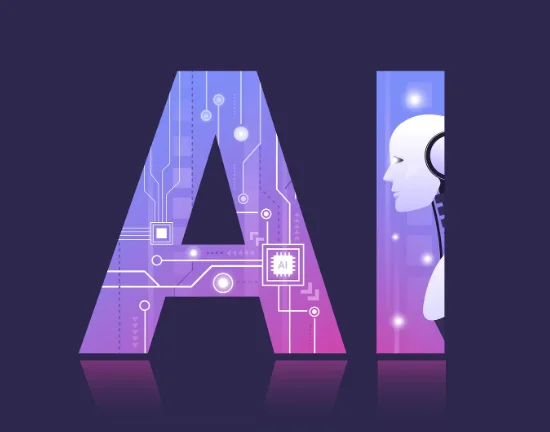How Machine Learning is Revolutionizing Trends and Design: A Comprehensive Guide

Machine learning has become a game-changer in the quickly changing field of technology, impacting many sectors and facets of our lives. Its influence is especially noticeable in the field of trends and design. We shall examine how machine learning affects and changes the world of design trends in this post.
Understanding these dynamics is essential for keeping ahead in the digital age, whether of your background in design or whether you’re just starting out with a machine learning course.
The Rise of Machine Learning in Design Trends- bridging the gap
Machine learning, with its ability to learn autonomously, is transforming the design industry by introducing innovation and creativity. ML algorithms impact various design aspects, from graphic design to user experience and interface design, influencing trends through data-driven insights. Specialized courses for creative individuals bridge the gap between design and technology, teaching skills such as algorithm understanding, data analysis, and the integration of machine learning tools into design workflows. These courses empower designers to stay relevant, be innovative, and contribute to cutting-edge design solutions that blend aesthetics with technology.
The Intersection of Machine Learning and Graphic Design
1. Enhanced Image Recognition and Editing
ML’s prowess in nmj bmimage recognition has redefined the possibilities in graphic design. Advanced algorithms can analyze images, identify elements within them, and even suggest edits based on established design principles. This not only expedites the design process but also contributes to the creation of visually stunning and cohesive graphics.
2. Generating Design Elements
Machine learning has given rise to tools that can generate design elements autonomously. Whether it’s logos, color palettes, or typography suggestions, these AI-powered tools assist designers in the initial phases of their projects. Designers can then iterate and build upon these generated elements to create truly unique and personalized designs.
3. Aesthetics and Emotional Impact
Understanding the emotional impact of design is crucial, and machine learning algorithms are becoming increasingly adept at gauging audience responses. By analyzing user interactions and feedback, these algorithms can provide insights into the emotional resonance of specific design elements, guiding designers in crafting visuals that evoke the desired reactions.
4. Personalized Design Experiences
ML significantly shapes design trends by facilitating personalized user experiences. Algorithms analyze user behavior and preferences, allowing designers to customize interfaces and content based on individual profiles. This not only boosts user satisfaction but also increases engagement and conversion rates. In web design, machine learning dynamically adjusts layouts based on user interactions, ensuring a seamless and personalized browsing experience that sets a new standard for design in the digital era.
5. Predictive Design Trends
ML algorithms demonstrate proficiency in scrutinizing extensive datasets, discerning patterns, and forecasting upcoming design trends. Designers and businesses can harness this predictive capacity to anticipate what will resonate with their target audience, guaranteeing that their creations stay innovative and pertinent.
6. Automating Repetitive Tasks
Designers frequently encounter repetitive and time-intensive tasks that impede their capacity to concentrate on creative endeavors. Machine learning provides a solution by automating these routine tasks, enabling designers to dedicate additional time and energy to ideation and innovation. This not only enhances efficiency but also empowers designers to delve into new possibilities and extend creative boundaries.
7. Unleashing Creativity
ML elevate the creative process for designers by analyzing extensive datasets and predicting emerging trends through user preferences, social media interactions, and market behavior. Rather than replacing human creativity, ML serves as a catalyst for innovation. Designers use these tools to automate tasks, freeing up time for ideation and experimentation, fostering a symbiotic relationship between human creativity and machine-driven insights, leading to a new era of design excellence.
8. Aesthetic Preferences
The aesthetic landscape is constantly evolving, and machine learning is a key player in this transformation. By analyzing vast amounts of visual data, ML can discern subtle nuances in design elements, helping to identify emerging aesthetic preferences. From color schemes to typography, ML contributes to the evolution of design aesthetics in ways previously unimaginable.
Machine Learning Courses: Empowering Designers for the Future
As ML continues to embed itself into the design landscape, the demand for skilled professionals who can navigate this intersection is on the rise. Designers are recognizing the need to upskill and incorporate ML into their toolkit. This has led to a surge in interest in ML courses tailored for designers.
Machine Learning Courses: Empowering Designers for the Future
As the interdependence between machine learning and design undergoes ongoing development, there is a growing need for individuals skilled in both domains. Opting for a customized machine learning course designed for designers can prove to be a strategic choice for those seeking to maintain relevance and competitiveness in the industry.
1. Bridging the Gap Between Design and Technology
Tailored ML courses for designers aim to seamlessly connect creative design principles with the technical intricacies of implementing machine learning algorithms. These courses empower designers with the expertise to effortlessly integrate machine learning into their design workflows, unlocking novel avenues for creative exploration.
2. Hands-On Learning and Real-World Applications
High-quality ML courses tailored for designers integrate immersive learning opportunities and practical, real-world scenarios. By engaging in hands-on projects and analyzing real-life case studies, designers can develop a more profound insight into the practical applications of machine learning to elevate their design processes. This hands-on, experiential learning methodology guarantees that designers not only acquire knowledge but also master the application of machine learning principles in their design endeavors.
3. Building a Design Portfolio with Machine Learning Integration
A ML course for designers should empower participants to build a portfolio that showcases their newfound skills. This not only acts as a testament to their proficiency in ML but also positions them as forward-thinking and versatile professionals in the competitive design landscape.
Key Skills Gained in a Machine Learning Course for Designers
1.Data Analysis and Interpretation: Designers learn to analyze vast datasets to extract meaningful insights. This skill aids in understanding user behavior, market trends, and the impact of design choices.
2.Predictive Modeling: Courses often cover the fundamentals of predictive modeling, enabling designers to anticipate future design trends and make informed decisions based on data-driven predictions.
3.Algorithmic Design Thinking: Integrating ML into the design process requires a unique approach. Designers learn how to think algorithmically, enhancing their problem-solving skills and creating designs that align with the capabilities of ML algorithms.
4.User Experience Optimization: Understanding user behavior is crucial in design. ML courses equip designers with the skills to optimize user experiences by personalizing interfaces and designs based on individual preferences.
Future Prospects for Machine Learning in Design
As technology advances and ML algorithms become more sophisticated, the future of design looks promising. From augmented reality experiences to AI-assisted design tools, the possibilities are vast. Professionals trained in both design and ML will play a pivotal role in shaping this future, making it an exciting and rewarding field to explore
Conclusion
As ML continues to shape design trends, it becomes imperative for design professionals to equip themselves with the necessary skills and knowledge. Enrolling in a comprehensive MS in machine learning is a strategic move for anyone aspiring to thrive in this innovative intersection of technology and design.
In conclusion, the integration of ML into design processes is redefining the way we approach creativity and innovation. From personalized user experiences to predictive design trends and automated workflows, the impact of machine learning on design is vast and multifaceted. Aspiring designers and seasoned professionals alike can future-proof their careers by embracing this technological shift, with ML courses providing the necessary tools and knowledge to thrive in the dynamic intersection of design and technology.

How Advanced Freight Broker Software Shapes a Profitable, Productive Supply Chain

How a Poor Internet Connection Can Hamper Your Business

The Ultimate Way to Stay Organized at Your Nail Salon

AI in Marketing Is No Longer a Buzzword — It’s the Strategy

Srinivasa Rao Challa Champions AI-Powered Financial Systems for a Smarter, Safer Economy

Why SOC Services Are Essential for Business Security: A 2025 Perspective
Comparing Wired and Wireless Car Tracking Systems

Can AI Write Code for Meta? What That Means for the Future of Tech








